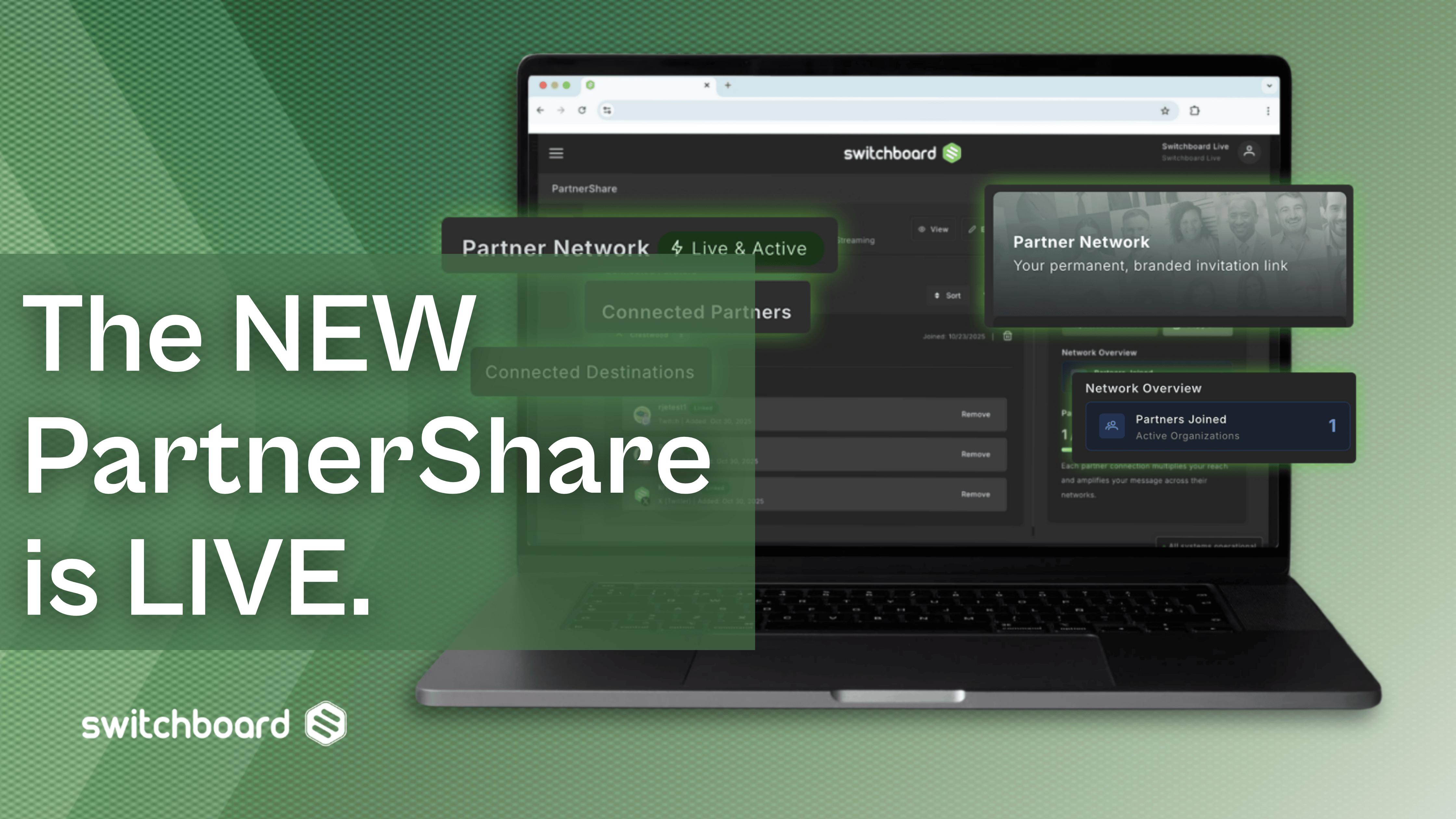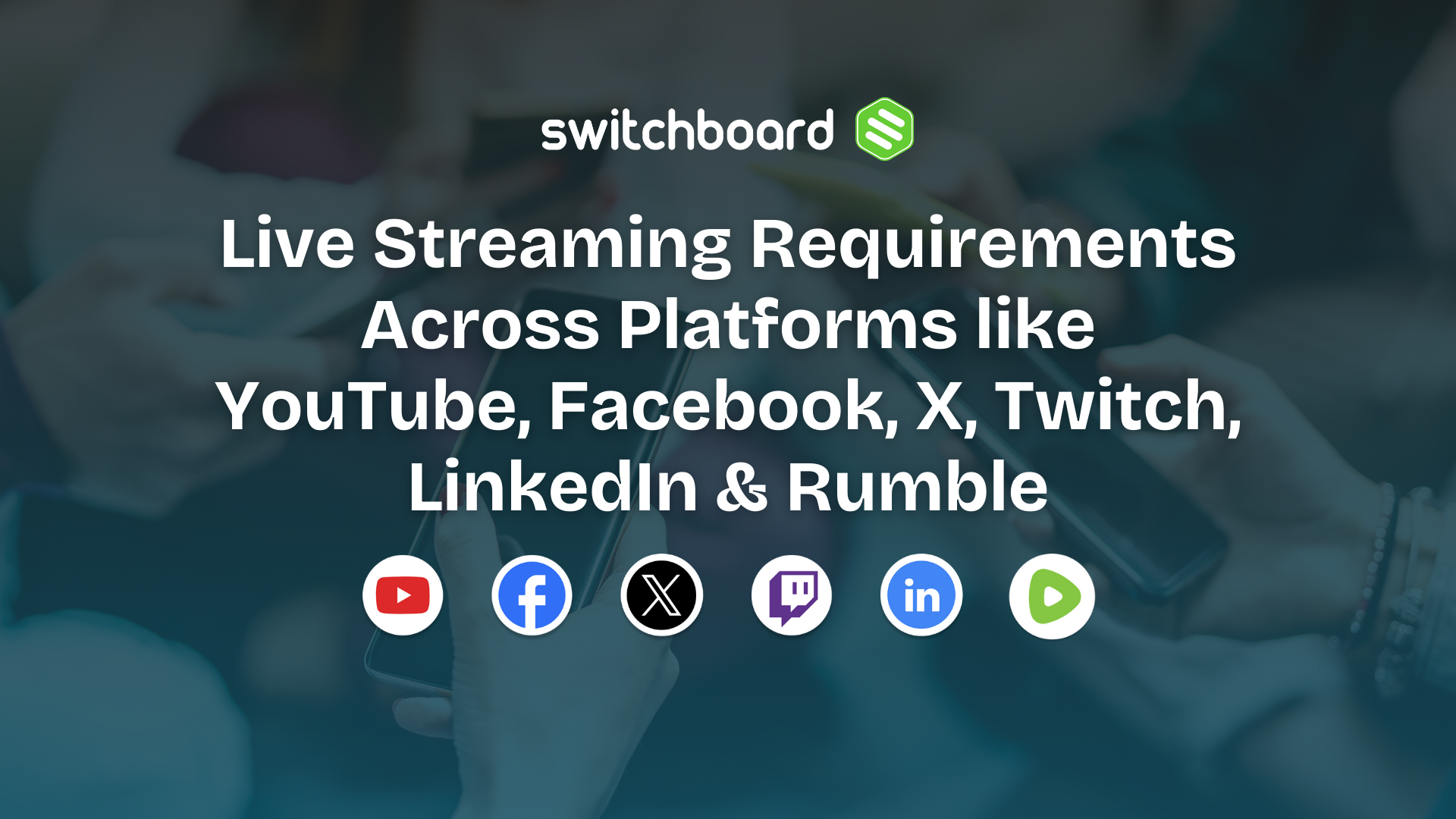“Please Stand By”
When watching a live stream, these are the three words you never want to hear or read. It could mean the video isn’t working, or the presenters are troubleshooting their own problems. For every moment that stream isn’t working, viewers are walking away and not receiving the intended message.
Before going live, take the time to work out any potential bugs that could chase away the audience you’re trying to engage with. Technical issues, platform targeting, and time zones are all avoidable stream pitfalls.

Don’t Lose the Live Audience to Buffer
Although sending video across the internet is getting faster and easier every day, it’s only good when it’s seen by the target audience. Complicating streaming even further is the wide variety of devices used to watch live video. Companies are no longer broadcasting to just desktops. These days, live video streams are actively being viewed on televisions, tablets, smartphones, and basically any device connected to the World Wide Web.
Even though the video looks good from the streaming computer, it doesn’t mean everyone can see it. If the target audience can’t see the video, then the message is immediately lost.
If viewers are losing the message because they can’t see the stream, there are two solutions to consider. First, consider which live streaming platforms are broadcasting the stream. Some custom-built platforms aren’t built for big screens (television) or small screens (phones and tablets). If getting the widest reach and growing your audience is important, consider using a platform like YouTube or Facebook Live.
If you want to extend your reach and broadcast simultaneously across multiple platforms, consider a solution like Switchboard Cloud, which allows you to stream to multiple platforms and device types at the same time, all with just one input.

Message Coming Across Loud & Clear?
While video is important, being heard is equally vital to live streaming success. If presenters are too quiet or too loud, their message may get immediately lost, negating the visual elements of any stream.
Before going live, it’s important to consider two factors that could mute any live video: the microphone hardware and the audio settings. While most webcams come with a microphone built in, these are often low-quality and broadcast sounds that are unclear, muffled, or low. Instead of using the on-board microphone, invest in a USB microphone. Starting around $20, a USB microphone makes sure the message is heard by the audience.
Second, make sure the audio settings from the broadcasting computer are set appropriately. Using a broadcast manager allows streamers to adjust audio levels before and during live stream sessions. Before going live, run a private test stream to make sure the audio sounds okay. Taking the time to make sure presenters are heard can make the difference between success and failure.
Prioritize the Stream on the Computer
How many browser windows are open on the computer right now? If the computer isn’t broadcasting, it can still run browsers, PowerPoint, e-mail, and graphic design software without a hitch. But add a stream to that load and performance can suffer.
When a computer is forced to choose where to allocate resources, the amount of power dedicated to broadcasting can be diluted. When this happens, video feeds can be delayed, broken up, or otherwise unintelligible to the viewer.
Before going live, its important to streamline the broadcasting computer’s operations. Close all non-essential operations and keep up only the necessary programs running. When all the computing power is dedicated to sending clear video and audio, the audience is much more likely to receive every word and picture without issue.

Is the Target Audience Being Reached?
After working out the most common technical bugs, live streamers can still accidentally set up for failure. A message only works if the target audience is there to view it – and streaming to the wrong platform ensures they may not ever see it.
There are two ways to tell if a live stream is effectively reaching an audience. First, consider their demographics. Who is the message built for and where are they going to see it? According to data collected by Business Insider, Facebook Live is now the most popular website for streaming, with 17 percent of those polled saying they watch live video inside the social network. YouTube came in a close second with 16 percent, while Snapchat captured 12 percent of the live video audience. Streaming to the right audience the first time around can reach the right audience and deliver positive return on engagement (ROE).
After a stream, it’s important to go through the analytics to determine who was watching, how long they watched for, and what they potentially took away. When engagement matters, powerful tools like Switchboard Cloud deliver channel-specific results after the stream, helping sales leaders make decisions about following up with prospects and allowing marketing teams to plan for the biggest audience in future streams.

Time Zones Can Affect Stream Viewership
Technical difficulties and preferred platforms aren’t the only hurdles in reaching new prospects. Depending on when a stream is scheduled, they may literally be tuned out. Plan to launch a stream when the audience can watch, ask questions, and walk away with new information.
Search Engine Journal suggests considering when a stream can work best. During working hours, streaming in the after-lunch lull between 1 and 3 PM can capture the most people. After work, turning on the camera between 6 and 9 PM may be a casual way to engage with the audience at home and host a conversation about industry affairs and new technologies. If the audience is split between multiple time zones, determine the best time to potentially reach everyone, or consider running two streams to ensure a live experience for every important viewer.
When it’s time to go live, don’t lose the audience with poor preparation. By anticipating the common problems above, every marketing team can ensure success each time the cameras turn on and the broadcast to a targeted audience begins.





.png)
.png)
.png)





